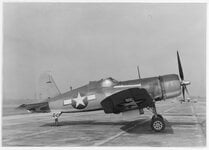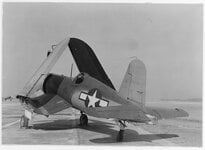So this brings me back to whether or not the fuselage insignia would have been blue surrounds (could explain those dark marks underneath, dripping paint from a hasty job being splattered on the side) while leaving the red surrounds on the wing. The consensus so far was that it would have been unlikely.
I'm almost sure the fuselage roundels had the blue outline. The wing one .. may be a problem but the red seems to be the one used there. As memo serves, although the red was ordered to be used for the oulines to the October 1943 the colour was used much longer and even in 1944 there were kites with the paint applied around the US markings.



